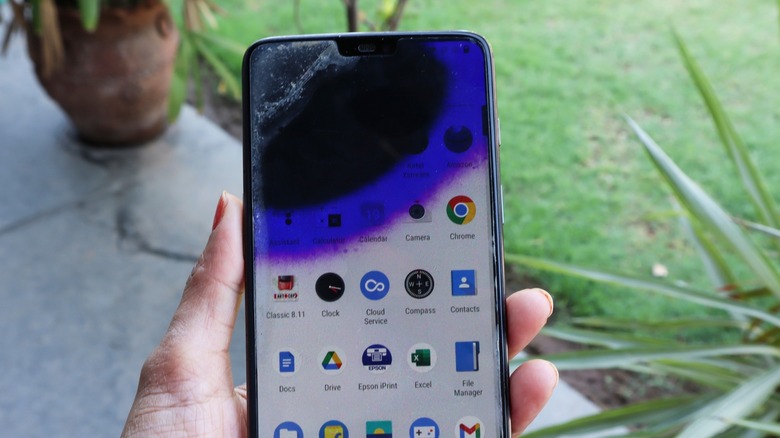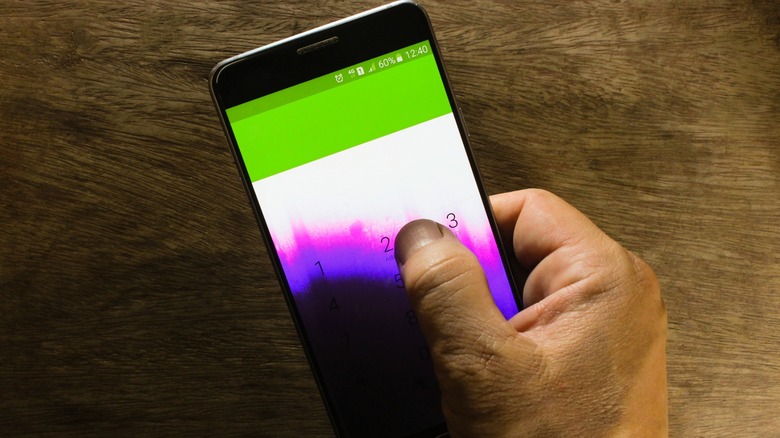If You See A Purple Dot On Your Phone Screen, Here's What It Means
There aren't many ways a smartphone can tell you that its screen is damaged. Of course, obvious cracks running across the screen are telltale pointers, but screens aren't made up of only glass. There are multiple delicate layers beneath it, including the touch digitizer that senses your finger movements, the LCD or OLED panel that produces the image, and backlighting or polarizing films that help control brightness and color. Damage to any of these hidden layers, not just the outer glass, can cause visual defects like purple spots, lines, or discoloration.
The purple spot, in particular, indicates that a pixel or a number of pixels have been compromised. How exactly that happens depends on whether it's an OLED/AMOLED or an LCD screen. Because OLED screens use an organic light-emitting diode (hence, OLED) for each pixel, when these organic compounds burn in or get damaged, they could emit purple light when they shouldn't. As for LCD screens, LCD stands for liquid crystal display, so when the liquid crystals are damaged, it can cause leakage and subsequently purple or magenta ink-like spots that could spread across the screen.
There are many factors that could cause this, but most of the time it boils down to impact or pressure damage, moisture or heat exposure, or just a manufacturer selling a defective display. Regardless, this issue usually cannot be fixed; cleaning it or using software fixes won't resolve the issue in the long term. You'll have to replace the screen completely.
Every day causes of purple screen spots
The most common culprit for the purple blob of screen death is pressure. Something as simple as keeping your phone in a tight pocket and sitting down can flex the display layers enough to damage pixels. Even resting a heavy bag or book on top of your phone overnight can leave lasting marks. Moisture and heat are another pair of offenders. Leaving your device in direct sunlight, on a hot car dashboard, or in a humid bathroom (for non-waterproof phones) can stress or damage the delicate liquid crystals, organic compounds, or other fundamental components that create the image.
In some rare cases, the problem comes down to manufacturing defects. A weak batch of OLED materials or poorly bonded LCD layers can fail sooner than expected, resulting in spots even when you treat the device carefully. When this happens, you should probably take advantage of the phone's warranty and refrain from attempting to fix it yourself, as this could void the warranty.
If you do start noticing a purple spot, it's also a sign to keep an eye on whether it spreads. These blemishes usually don't stay the same size; they can grow as more pixels or liquid crystal regions fail. Once that happens, you could start seeing faint lines, blotches that darken with time, or parts of your screen may stop responding altogether. The damage itself may not really harm the core part of the phone, but it'll make using the phone difficult.

